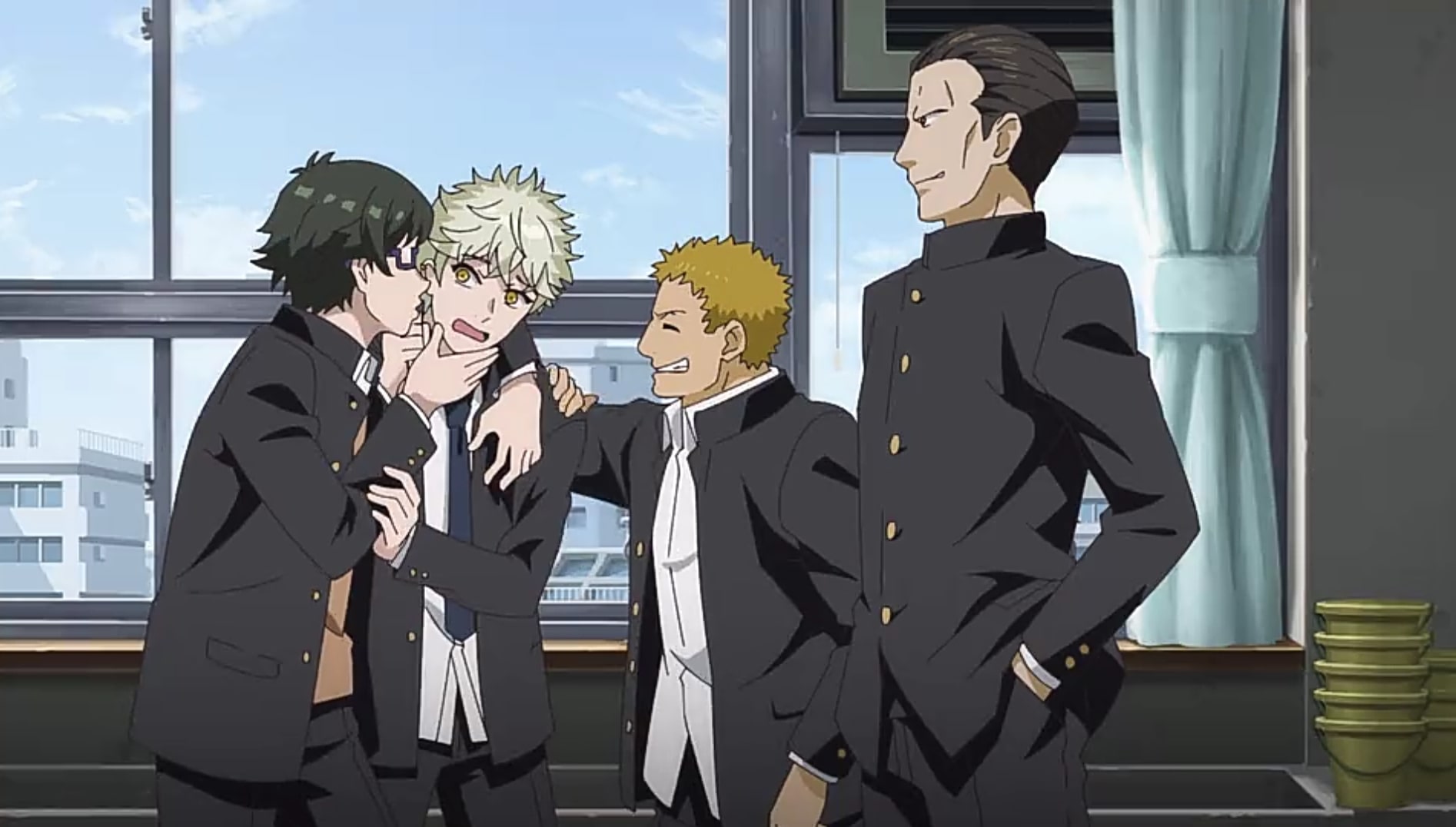Netflix’s ‘Blue Period,’ based on Tsubasa Yamaguchi’s manga, is a wholly Shounen TV anime. The novel becomes a coming-of-age tale showing the protagonist’s inner conflict and his family’s financial troubles up close.
While Yaguchi is well-liked and does well in school, he lacks direction and purpose in his life. The story centers around Yaguchi. Then he comes upon art and understands it’s the missing puzzle piece. Episode 1 of ‘Blue Period,’ which is currently airing on Netflix, ends with a bang. WARNING: This section contains plot spoilers.
Episode 1 of the Blue Period (Season 1) Review
We meet Yatra and his companions Utashima, Sumida, and Koigakubo in the first episode, titled ‘Awakening to the Joy of Painting.’
They enjoy one other’s company while they eat, drink, and smoke while watching soccer. Yatra appears to be a highly outgoing person who spends very little time learning. Since his friends believe he is intelligent, they are impressed when he achieves good exam scores. He informs them that he is a diligent worker in reality.
However, he doesn’t appear to be interested in anything. Yatra is lost in his thoughts. He engages in various activities, such as studying and socializing with his peers, because they all fit into a larger pattern.
A picture created by one of Yatora’s seniors is discovered while visiting the art class to retrieve a pack of cigarettes he had unintentionally left behind.
It has a tremendous effect on him. He meets art club member Ryuuji Ayukawa and strikes up a conversation with him. At first, their connection is tense, but things start to look up as they get to know one another.
In the last moments of Blue Period Episode 1, Yatra makes a career decision.
Yatra intends to pursue a career in the arts shortly. His family’s financial situation, on the other hand, does not permit him to attend a private school.
As a result, he’ll have to attend a public school regardless of his preferences. Only one school in Japan offers a painting degree, and that’s at the Tokyo University of the Arts, where admission is highly competitive.
It wasn’t an easy choice for him to make. Because he comes from a working-class background and is well aware of his predicament, he is initially dubious about pursuing a career in art.
Because it is rooted in reality, the starving artist is a common literary and cinematic cliche. Only a tiny percentage of artists achieve some level of fame or fortune after their careers end. In addition, he even wonders if he has the talent to be a successful musician in the first place.
Yatra’s art teacher, Masako Saeki, assures him that his concern about financial stability is neither unique nor troublesome by relating stories about Picasso and how commercially minded the brilliant painter was.
Senior artist Maru Mori, whose work he admired, teaches him the importance of experience and wisdom above pure skill. All of this, as well as Yatora’s personal experience while painting his Shibuya vision, forces him to make a choice.

